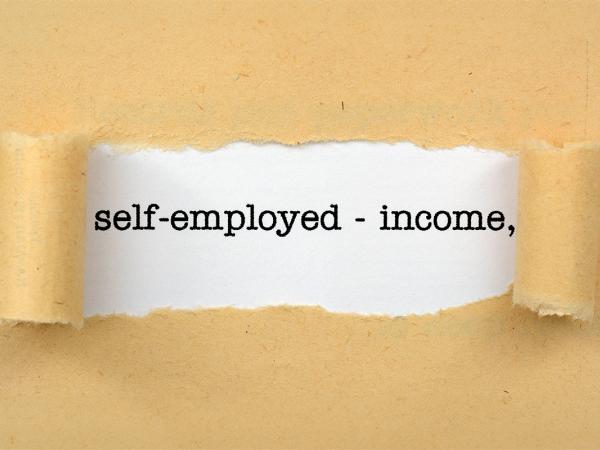Surplus earnings
The surplus earnings rules apply whether you are employed or self-employed or both. The rules allow excess earnings to be carried forward from one assessment period to another if certain conditions are met.

Content on this page:
Overview
The general rule for calculating earned income (employed and self-employed) in respect of an assessment period is that it is to be based on the actual amounts you receive in that period.
To reduce the risk that some claimants might deliberately change their earnings patterns to maximise their universal credit entitlement, surplus earnings rules were introduced so that excess earnings can be carried forward to subsequent assessment periods. These rules are very complicated and there is more detailed information about how the surplus earnings rules work on our website for advisers, Revenuebenefits.
The surplus earnings rules do not apply unless earned income is high enough to reduce your UC award to nil plus an additional £2,500. This means that currently surplus earnings will only apply if you have a very large increase in income in one assessment period or if your circumstances change so that your award reduces to nil at a much lower income.
Surplus earnings will not apply if you have, or had at the time the old award terminated, recently been a victim of domestic violence.
Applying the surplus earnings rules
The surplus earnings rules are most likely to apply if you have an increase in earned income in an assessment period that reduces your universal credit award to nil and so terminates your claim. However, the rules can also be triggered where there is no change in income, but your circumstances change so that elements are removed from your award meaning that your same level of earnings can reduce your universal credit to nil.
If either of these situations applies to you and you then make a new claim for universal credit DWP will carry out a surplus earnings calculation. This will happen if you (or either of the claimants in a joint claim):
- Had an award of universal credit (the old award) that terminated within the 6 months ending on the first day in respect of which the new claim is made; and
- Have not been entitled to universal credit since the old award ended; and
- The total amount of earned income in the month that would have been the final assessment period of the old award (had it not terminated) exceeded your relevant threshold.
Any surplus earnings calculated will be treated as earned income (meaning any work allowance and the 55% taper will be applied against them) when deciding whether you are entitled to a new award of universal credit and, if you are, how much you will get. In other words, surplus earnings from an old claim can reduce the amount paid on a new claim if you make the new claim within six months of the old claim ending.
Surplus earnings calculation
DWP will do this calculation, you do not need to work surplus earnings out for yourself but here we explain the principles of the calculation. There is more detailed information on our website for advisers, Revenuebenefits including an example of how these rules are applied in practice.
- First claim since the old award terminated
-
If this is the first claim made since the old award terminated, the surplus earnings are calculated as follows:
- Work out the total 'earned income' in the month that would have been the final assessment period of the old award (had it not been terminated)
- Deduct the 'relevant threshold' for the month that would have been the final assessment period of the old award (had it not been terminated) from the figure above.
This amount is known as the 'original surplus'. This amount will be added to the new claim as earned income.
- Second claim since the old award terminated
-
If this is the second claim made since the old award terminated, the surplus earnings are calculated as follows:
- Work out the 'original surplus' (as above)
- Add the 'total earned income' for the month that would have been the first assessment period in relation to the first claim to the figure in the first bullet
- Deduct the 'relevant threshold' for the month that would have been the first assessment period in relation to the first claim to the figure in the second bullet.
This amount is known as the 'adjusted surplus'. This amount will be added to the new claim as the earned income.
- Third claim since the old award terminated
-
If this is the third claim made since the old award terminated, the surplus earnings are calculated as follows:
- Work out the 'adjusted surplus' from the second claim (explained above)
- Add the 'total earned income' for the month that would have been the first assessment period in the second claim to the figure found in the first bullet
- Deduct the 'relevant threshold' for the month that would have been the first assessment period in relation to the second claim to the figure found in the second bullet.
The amount will be added to the new claim as earned income.
- Fourth claim since the old award terminated
-
If this is the fourth claim made since the old award terminated, the surplus earnings are calculated as follows:
- Work out the 'adjusted surplus' from the third claim (explained above)
- Add the 'total earned income' for the month that would have been the first assessment period in the third claim to the figure found in the first bullet
- Deduce the 'relevant threshold' for the month that would have been the first assessment period in relation to the third claim to the figure in the second bullet.
This amount will be added to the new claim as earned income.
- Fifth claim since the old award terminated
-
If this is the fifth claim made since the old award terminated, the surplus earnings are calculated as follows:
- Work out the 'adjusted surplus' from the fourth claim (explained above)
- Add the 'total earned income' for the month that would have been the first assessment period in the fourth claim to the figure found in the first bullet
- Deduct the 'relevant threshold' for the month that would have been the first assessment period in relation to the fourth claim to the figure in the second bullet.
This amount will be added to the new claim as earned income.



